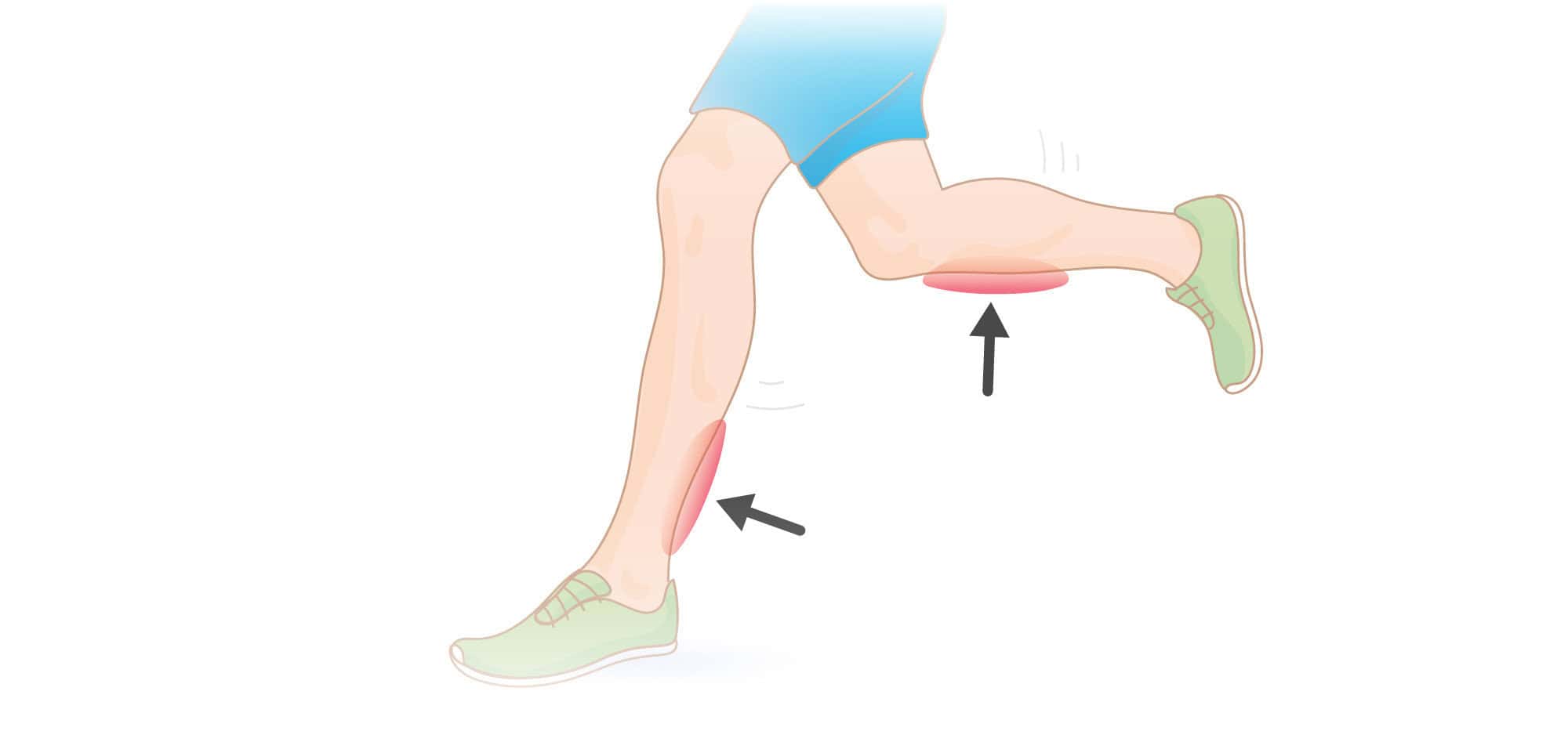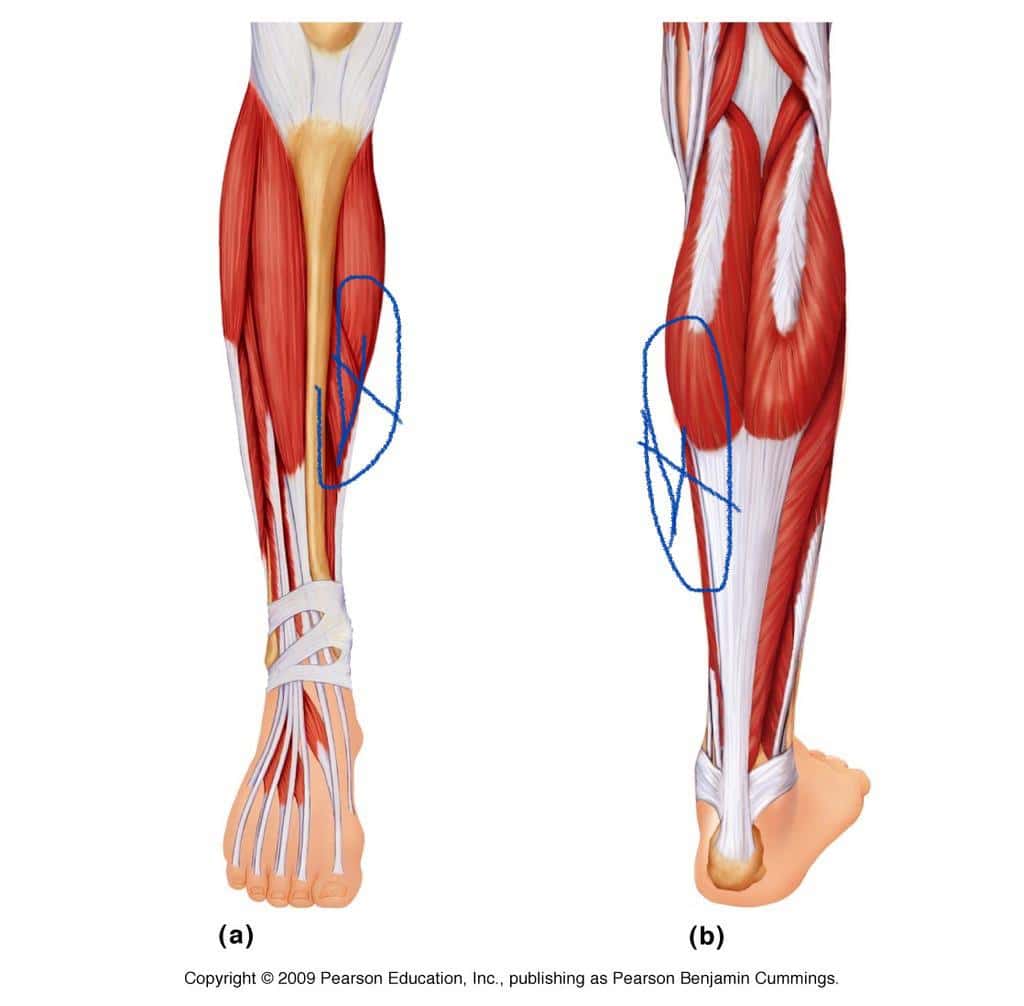Do you ever find yourself wincing from an annoying sensation in your lower legs while you’re out for a jog? You’re not alone; many runners face similar issues. Discomfort in this area can stem from a mix of reasons, leading to muscle soreness or even a running injury.
Figuring out the potential culprits behind your leg aches is important for keeping up with your fitness routine.
Sometimes, it turns out to be just an overuse injury or a lack of proper warm-up routines.
Other times, you might be dealing with calf cramps or even shin splints. Let’s address common issues like muscle soreness, running injuries, lower leg discomfort, shin splints, Achilles tendonitis, calf cramps, and overuse injuries to enhance your running experience.
Causes Of Calf Pain While Jogging
Hitting the pavement can sometimes lead to unexpected discomfort in your legs. Often, this soreness is tied to factors like muscle strain and wearing the wrong running shoes.
Overdoing it on your runs can quickly lead to inflammation in those hardworking muscles.
If your sneakers have seen better days, a replacement might be just what you need to keep going strong.
Incorporating stretching techniques before and after jogging can make a big difference in how your muscles feel.
A quick check of your gait analysis can help ensure your running form is as smooth as possible, potentially reducing strain. Should you notice any persistent pain, exploring options like physical therapy or indulging in a sports massage, alongside incorporating stretching techniques and investing in proper running shoes, could help address inflammation and improve your overall performance, especially when combined with gait analysis and the RICE method.
Identifying Symptoms Of Injury
It can be tough to figure out what’s going on with your body when you’re caught up in the flow of a run. One of the first things to pay attention to is various sensations of discomfort.
Differentiating between muscle fatigue and a more serious issue is important.
If you’re encountering sharp or persistent pain, that’s definitely something you should take seriously.
Watch for any physical signs like swelling or bruising, which might indicate a tendon strain.
These signs can illuminate the nature of your condition and give you insight into your recovery time. Keeping tabs on how you feel is super important, so make sure you’re not skipping your warmup exercises or cooldown routine. This approach can help you effectively manage tendon strain and muscle fatigue, reduce recovery time, and improve overall performance through proper warmup exercises, a cooldown routine, pain management techniques, and flexibility training.
Running Injury Awareness
- Muscle fatigue is a common sensation during running, but distinguishing it from injury is crucial for long-term health.
- Physical signs like swelling or bruising can indicate a tendon strain, emphasizing the need for self-monitoring.
- Incorporating warmup exercises and cooldown routines can significantly reduce the risk of injuries and aid recovery.
- Flexibility training is essential for improving overall performance and minimizing the likelihood of muscle fatigue and tendon strains.
Effective Recovery Techniques For Calf Strain
Getting back on your feet after a lower leg injury can feel like a journey rather than a task. A solid first step is ensuring you give your legs a well-deserved break to foster healing.
Rest plays a big role, but don’t forget about staying hydrated! Proper hydration helps your muscles recover more effectively, preventing any unwanted muscle strain down the line.
Gentle stretching can also be incredibly beneficial.
As you start to feel better, incorporating some light stretches can ease any leg tightness you may experience.
Plus, adding strength training to your routine will enhance your endurance running capabilities and help in injury prevention. A stronger muscle foundation means less strain on your calf, allowing for better biomechanics during endurance running, reducing leg tightness and muscle strain, while also enhancing injury prevention and the benefits of crosstraining and proper hydration.
How Running Shoes Affect Calf Pain
Selecting the ideal running shoes can make a world of difference in how your calves respond during your workouts. When shoes don’t fit just right, discomfort can sneak in, leading to strain in your muscles.
Proper form and footwear support really play an important role here.
The right shoes help maintain joint stability, which keeps injuries at bay.
Plus, sufficient cushioning is key; it not only enhances comfort but also boosts muscle engagement. If you’re unsure about your shoe fit, think about seeking professional fitting to ensure you’re set up for success!
Transitioning from effective recovery techniques for calf strain, let’s explore how the right shoes set the stage for smooth runs and assist in prevention. Your approach to stretching techniques pre-run can further improve your performance and contribute to better nutrition, support in injury rehabilitation, enhance joint stability, and the effectiveness of massage therapy while ensuring proper footwear support and form.
Running Shoes and Calf Health
- Properly fitting shoes reduce the risk of muscle strain and discomfort during workouts.
- Good footwear provides essential joint stability, helping to prevent injuries.
- Ample cushioning in running shoes enhances comfort and increases muscle engagement.
- Professional shoe fitting can significantly improve your running experience and performance.
Importance Of Stretching Techniques PreRun
Getting ready for your run? Let’s chat about why those stretches play such a vital role. Warming up your muscles increases blood flow, setting the stage for an invigorating workout.
This nifty routine not only helps improve flexibility but also reduces your chances of soft tissue injury, which can really throw a wrench in your plans.
Targeting specific muscle groups during your warm-up can alleviate discomfort, helping you maintain an effective running form.
Plus, a solid stretching routine sets a positive tone for your workout. The right stretches can truly elevate your performance and support pain relief.
Dynamic stretches are perfect for engaging your calves and activating surrounding muscles. Don’t forget, incorporating recovery exercises after your run, like self-myofascial release and strength training, can help alleviate pain, address trigger points, and improve running form, ultimately reducing the risk of soft tissue injury.
Tips For Injury Prevention And Pain Management
Keeping your body feeling great while running doesn’t have to be a puzzle. Start with a solid warm-up routine to get your muscles ready for action.
Think about incorporating some dynamic stretches that not only engage your running technique but also help in preventing those pesky sports injuries.
It’s all about easing into the movement, right?
And let’s talk about listening to your body.
If you’re experiencing any discomfort, especially during those long sessions of endurance training or right after calf raises, don’t push through it. Taking a breather is part of the game.
Prioritizing leg recovery can really keep those biomechanical issues at bay later on. So, don’t underestimate the importance of integrating endurance training, yoga, and calf raises into your routine to prevent sports injuries and improve leg recovery by addressing biomechanical issues in your running technique.
Conclusion
Keeping your runs enjoyable doesn’t have to be a hassle. Paying attention to your body’s signals is important for long-term success.
Regular injury assessment can help spot potential issues before they escalate.
Focus on your posture while jogging; it can greatly influence your calf health.
Simple stretches and therapeutic exercises woven into your routine can enhance flexibility and prevent muscle imbalance.
Think about adding foam rolling after your runs.
It can really help with recovery and keep your muscles relaxed. By emphasizing active recovery and leg strengthening, you’ll set yourself up for smoother, pain-free jogs
Originally posted 2024-11-14 23:50:06.


